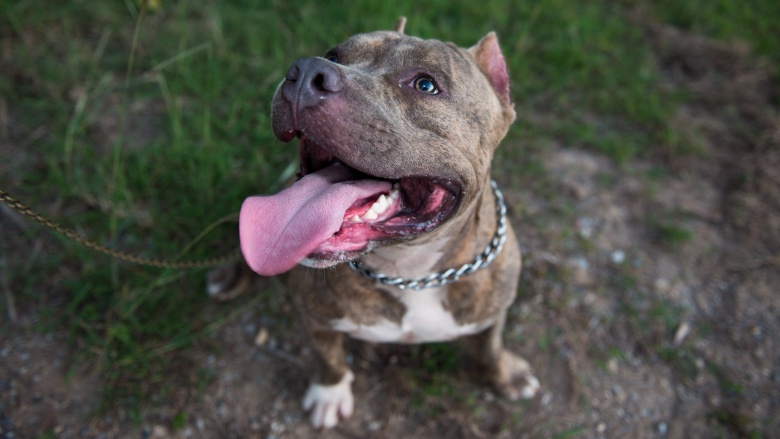False Facts About Dogs You Always Thought Were True
We love our dogs, that's no secret. We love everything about them, even that guilty look they have when they know they've done wrong. They've been at our side for thousands of years, and across those years? We think we've gotten to know them pretty well. There are, however, more than a few misconceptions that we've created around our amazingly devoted companions. Try as we might, we just can't shake some of them. Hopefully, we can debunk a few.
Dogs and cats just can't get along
"Human sacrifice, dogs and cats, living together, mass hysteria!" That's according to one of New York City's leading parapsychologists, and who are we to argue? Actually, we will argue this time, because dogs and cats can live together without launching the world into the end times.
Any multi-pet household can have its challenges, and just like human families have their fights, our animal companions will have their angry outbursts, too. But some dogs just outright love their kitty companions, and researchers from Tel Aviv University hacked the canine-feline relationship to figure out just how the two species related to each other. They looked at 200 households that had both dogs and cats, and then looked at how the pets in question related to each other. It was only in about 10 percent of those homes that there was the least bit of conflict between the two. Observing body language and social cues between the two revealed that they had adapted to read each other's signals and essentially speak the same language. The younger the kittens and puppies were when they were introduced, the more adept they became at reading each other and, ultimately, the more likely they were to form a bond that was more "best buds" than "mortal enemies."
The make-or-break of these relationships is, of course, humans. At the most basic level, dogs speak a language that's different from cat-speak, and introducing them the right way makes a world of difference. Exchange bedding, introduce them to each other's scent, and make sure everyone feels safe. Cats watch while a dog gets excited, and forcing them to get up-close-and-personal too fast is a mistake that leads to this entire misconception. The moral of the story? Humans can even ruin relationships between entirely different species from our own. Way to go, humans.
Some dogs have locking jaws and off-the-charts bite pressure
Listen to the people who have a grudge against the adorable pile of love that's generally referred to as a pit bull, and you'd think they were hell-made killing machines. They have jaws that lock, the story goes, and a bite pressure that (depending on who's talking) lets them snap their way through steel.
No, they don't and they can't. Stop it. Let's take the first one. According to researchers like the University of Georgia's I. Lehr Brisbin, Ph.D., pit bull-type dogs not only don't have locking jaws, but they don't have jaws that are different than any other type of dog. As of the writing of that article in 2010, they also went on to say that there have never been any studies done that measured the bite pressure of any dogs.
In 2012, National Geographic set out to measure not only the bite pressure of dogs, but of other animals, like humans. The pit bull registered 235 pounds per square inch on the bite meter, the German shepherd managed 238 psi, and the Rottweiler hit 328 psi. Sounds like a ridiculous amount of pressure, right? They also tested some humans and found that our bite pressure averages between 150 and 200 psi. Hyenas clocked in at 1,000 psi, but the official top dog of the animal kingdom was the saltwater crocodile with a 3,700 psi bite. Given that little bit of terrifying information, it seems the stories about pibbles and their biting are a little exaggerated.
Ex-fighting dogs will always be dangerous
Those who claim a pit bull is capable of tearing off limbs are likely the same people who tend to insist that dogs bred and raised in a fighting world will always be untrustworthy and aggressive. Also, so not true.
Just ask Sox and Hector, former fighting dogs who now spend their days visiting hospitals and nursing homes as certified therapy dogs. No one told Jonny Justice how violent he was supposed to be, as he spent his post-fighting days in local libraries, helping kids brush up on their reading skills by providing a captive audience for them to read to. (Sadly, the library insisted on continuing to discriminate against him for how he looked and stopped the program rather than allow him through the doors.) Those are just three of the so-called Vicktory dogs, rescued from Michael Vick's kennels and a lifetime of abuse. Countless others still bear the scars and have gone on to cuddling with their kitten friends, snoozing on couches, and becoming very good dogs and examples of the heart and soul every living creature should aspire to have.
Since Vick's dogs made headlines across the country, their success in leaving the fighting world behind has given supporters the proof they need to make a solid case for bringing dogs out of the fighting pits and into homes. While the popular belief is that these dogs are violent and aggressive, those who work with them see something else: dogs that are traumatized and terrified. Fortunately, they also see potential for love, too.
One human years equals seven dog years
This one sort of makes sense at a glance. Dogs sadly don't live as long as we do, but they still clearly go through different life stages. One to seven, right? It's always wrong, and it's ridiculously more complicated than that.
Let's look at that first year. One comparison to a pup's first year is that they do the same amount of living as a 13-year-old human. But that's a tough call to make, as most dogs reach their adult size in that first year, while 13-year-old humans typically don't. Different stages are packed into those first months, like the "scary" stage, which happens between 4-8 months when they're learning that things can be potentially terrifying. From 6-10 months? Most lose their capacity to govern their impulses. (Remember this when you're deciding between a puppy and an adult dog.)
That's just the first year, and beyond that it gets more complicated. Relative age has a lot to do with the size of the dog, and some giant breeds age so fast that they're considered seniors by the time they're only 5 years old. It might take a lap dog 9 or 10 years to get to that same state, and things like diet and exercise impact that, too. At the end of the day, there's no tried-and-true method for figuring out just how old your dog is in human years, so watch out for breed-specific issues and then measure in ... regular years. It'll be easier to put the candles on the birthday cake.
Dogs eat grass because they have an upset stomach
This one's all over the place, and if a stranger has ever seen your dog eating grass, that stranger probably told you that your dog has an upset stomach. (Because people are 100 percent incapable of minding their own business.) Next time, don't get annoyed. Just explain how wrong that is.
One 2008 study looked at 1,571 different dogs, and found that about 68 percent of them liked to eat grass. They also found that if a dog acted like she wasn't feeling good before she ate the grass, she was more likely to be sick after. But that only applied to about 8 percent of the dogs. There's no nutritional value to grass — and dogs can't digest it — so what gives?
This is another behavior that seems to be hard-wired into our canine companions from their wild wolf days. In the wild, grass acts as a sort of natural wormer. Fibers that pass through the intestines and keep going out the other end snag worms along the way, helping to flush out their systems. There are a few other theories going around as to what it really means, and since we can't actually ask them what they heck they're doing, it's the best we've got. (Well, we can and we have. It's just that responses have been lacking.) Some vets suggest that the behavior might be a part of a dog's ability to act incessantly hungry, while another answer might be as simple as, "They just like it."
A wet nose means a healthy dog
It's tough when your dog isn't feeling good. They can't exactly say what's wrong, after all, and how nice would it be if we could diagnose them ourselves just by looking at them? Unfortunately, we can't, and the idea that a dog with a cold, wet nose is healthy while a sick dog has a dry, warm nose would be nice. But it isn't true.
According to veterinarians, the level of nose dampness doesn't mean a whole lot. There's plenty of times that a perfectly healthy dog might have a dry nose, like if he's been lying in the sun sleeping or outside in the wind. Older dogs might have a dry nose just because, as would dogs that have been sound asleep and haven't been licking their noses. You know, some of the same reasons your own skin might get dry. (Except for the licking part. If that's the case, you might want to keep it to yourself.)
Dogs lick their noses all the time, so they should usually be at least slightly damp. They stick those noses everywhere, after all, and it's also thought that keeping their noses wet might help them detect even the smallest of scents. We're pretty sure it's also entirely possible that they do it just to leave their mark on the inside of our car windows, too.
Neutering/spaying changes a dog's personality for the worse
There are a lot of good reasons to get your dog spayed or neutered. Those reasons are sitting in shelters waiting for their homes right now. To those who say that the operation will change their dog's personality for the worse? Absolutely not, and it might even solve some problems and save a life or two.
Neutering a male dog can reduce some major behavioral problems, like aggression. One study that looked at 382 females and 209 males found that the only behaviors that changed were problem behaviors. Males and females became less aggressive, while playfulness, perseverance, determination, and watchfulness were unchanged. Also reduced? Roaming tendencies. The scent of a female dog in heat can travel over a long distance, and boys can turn into a regular, single-minded Houdini when it comes to escaping in search of their lady-love.
What doesn't change is a pet's basic personality; that's like suggesting that a human man who gets the same operation will suddenly start rooting for the Dolphins when he's always been a Dallas man. And you know that isn't happening.
We basically know how and where dogs were domesticated
This one might be the biggest myth of all. We all know that man domesticated dogs a long, long time ago, probably about the time they realized we had opposable thumbs and could do useful things like start campfires and hand out treats. You've probably heard, too, that it happened somewhere best described as "over there," and the idea spread across the world.
But that isn't really it. Attempts at tracing the genetic evolution of our canine companions suggest they were domesticated once in Europe and once in Asia. There's science here, and we'll water it down. A research team led by a University of Oxford geneticist called Greger Larson took some DNA from the remains of a dog that lived 4,800 years ago and was buried in the sacred Irish site of Newgrange.
We'll call him Seamus.
When researchers took a look at Seamus's bones, they found enough material to do a full genome sequence on him. That's no small feat. A bone that old will usually yield up 1-2 percent of a creature's full genetic code. They had Seamus's petrous bone, though, a piece of his inner ear that gave them the whole thing. Using Seamus's DNA, they were able to create a sort of family tree that included 700 of our present-day pups. They found that there was a huge split right down the middle of the tree, with Eastern dogs like the shar-pei on one side and European dogs like Labrador retrievers on the other. The two dog families separated sometime between 6,400 and 14,000 years ago. The catch? The oldest fossils we've found of our treasured companions are older than that... and that seems to suggest that dogs were domesticated independently, from two different wild populations, once in the East and once in the West.
The science is still out on this one, and it's unlikely to be a mystery that's unraveled any time soon. Even with complete DNA strands like the one belonging to Seamus, dogs have been cross-bred a ridiculous number of times. Factor in the confusion that comes from the fact that they've been traveling with us for thousands of years and spreading their DNA across countries, and there's nothing clear about our precious pups' family tree. That's all right. Everyone has some skeletons in their closets; every family has that one weird uncle that we just don't talk about. We love them anyway.








